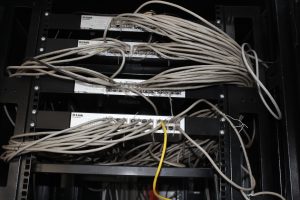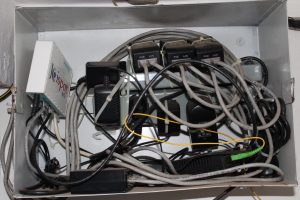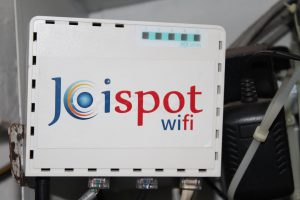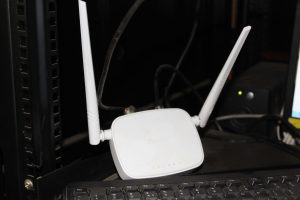Server:
⦁ Intel® Xeon® E5-2600 v3 product family Intel® Xeon® E5-2600 v4 product family
⦁ Intel® Xeon® E5-2600 v3 product family Intel® Xeon® E5-2600 v4 product familyProcessor core available
- 14 or 12 or 10 or 8 or 6 or 4Processor cache
- 10 MB LLC 15 MB LLC 20 MB LLC 25 MB LLC 30 MB LLC 35 MB LLCProcessor speed
- 3.0 GHzPower supply type
- 2 Entry-level Expansion slots
- 3 maximum, for detailed descriptions reference the QuickSpecsMaximum memory
- 256 GBMemory slots
- 8 DIMM slotsMemory type
- HPE DDR4 SmartMemoryMemory protection features
- Memory Online Spare ModeDrive description
- (4) LFF SAS/SATA/SSD or
- Hot plug and/or Non-hot plug, depending on modelSystem fan features
- Hot swap redundant optionalNetwork controller
- 1 Gb HPE 361i Ethernet adapter, optional FlexibleLOM on riser, depending on modelStorage controller
- HPE Dynamic Smart Array B140i or HPE H240 Host Bus Adapter or HPE Smart Array P440/4 GB, depending on modelInfrastructure management
- Standard: HPE iLO Management with Intelligent Provisioning Optional: HPE iLO Essentials, HPE iLO Scale-Out and HPE iLO Advanced
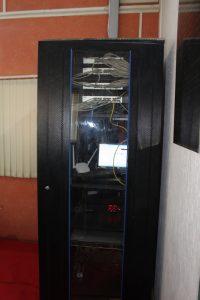
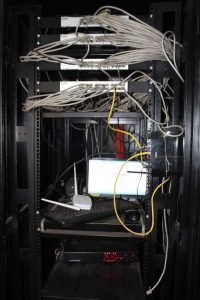
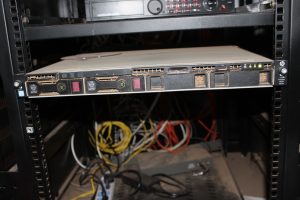
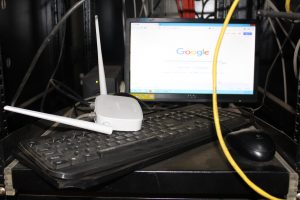
Network Facility
D-Link Switch 24 Port
DGS-1024A
The D-Link DGS-1024A is a 24-Port 10/100/1000Mbps switch that works with your current Ethernet network while allowing you to upgrade to gigabit speeds. With an aggregated bandwidth of up to 48Gbps and up to 9K jumbo frame support, its addition to any network will dramatically improve traffic flow and eliminate bottlenecks. Installation is plug-and-play, as every port supports
Create a small network and connect computers, wireless Access Points, IP cameras, network printers and other Ethernet devices quickly and easily without complicated configurations
Auto-MDI/MDI-X. DGS-1024A is an economical solution for bandwidth-intensive environments needing a compact desktop form factor.
- 24 Ports with Gigabit Ethernet Speed
- Revolutionary Design
- Eco-Friendly
Types of Networks
There are several different types of computer networks. Computer networks can be characterized by their size as well as their purpose.
The size of a network can be expressed by the geographic area they occupy and the number of computers that are part of the network. Networks can cover anything from a handful of devices within a single room to millions of devices spread across the entire globe.
Local Area Network
A local area network, or LAN, consists of a computer network at a single site, typically an individual office building. A LAN is very useful for sharing resources, such as data storage and printers. LANs can be built with relatively inexpensive hardware, such as hubs, network adapters and Ethernet cables.
The smallest LAN may only use two computers, while larger LANs can accommodate thousands of computers. A LAN typically relies mostly on wired connections for increased speed and security, but wireless connections can also be part of a LAN. High speed and relatively low cost are the defining characteristics of LANs.
LANs are typically used for single sites where people need to share resources among themselves but not with the rest of the outside world. Think of an office building where everybody should be able to access files on a central server or be able to print a document to one or more central printers. Those tasks should be easy for everybody working in the same office, but you would not want somebody just walking outside to be able to send a document to the printer from their cell phone! If a local area network, or LAN, is entirely wireless, it is referred to as a wireless local area network, or WLAN.
Internet & Wi-Fi Facility
Wireless Communication Technologies
The term wireless refers to the communication or transmission of information over a distance without requiring wires, cables or any other electrical conductors. Wireless communication is one of the important mediums of transmission of data or information to other devices. The Communication is set and the information is transmitted through the air, without requiring any cables, by using electromagnetic waves like radio frequencies, infrared, satellite, etc., in a wireless communication technology network.
At the end of the 19th century, the first wireless communication systems were introduced and the technology has significantly been developed over the intervening and subsequent years. Today, the term wireless refers to a variety of devices and technologies ranging from smart phones to laptops, tabs, computers, printers, Bluetooth, etc.
In recent days, the wireless communication technology has become an integral part of several types of communication devices as it allows users to communicate even from remote areas. The devices used for wireless communication are cordless telephones, mobiles, GPS units, ZigBee technology, wireless computer parts, and satellite television, etc.
Satellite
Satellite communication is one of the wireless technologies, which is widely spread all over the world allowing users to stay connected virtually anywhere on the Earth. The Satellites used in this mode of communication, communicate directly with the orbiting satellites via radio signals. Portable satellite phones and modems have more powerful broadcasting abilities than the cellular devices as they have high range, apart from being more expensive in terms of cost, than their counterparts.
For example, for outfitting a ship through satellite communication, a traditional communication system is linked to a single satellite, which allows multiple users to share the same broadcast equipment.

